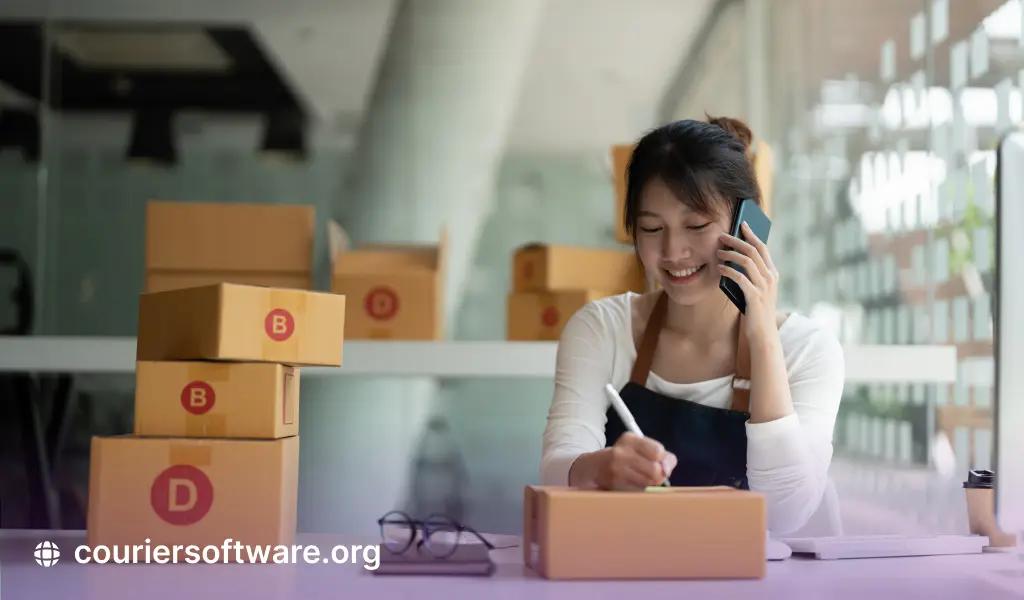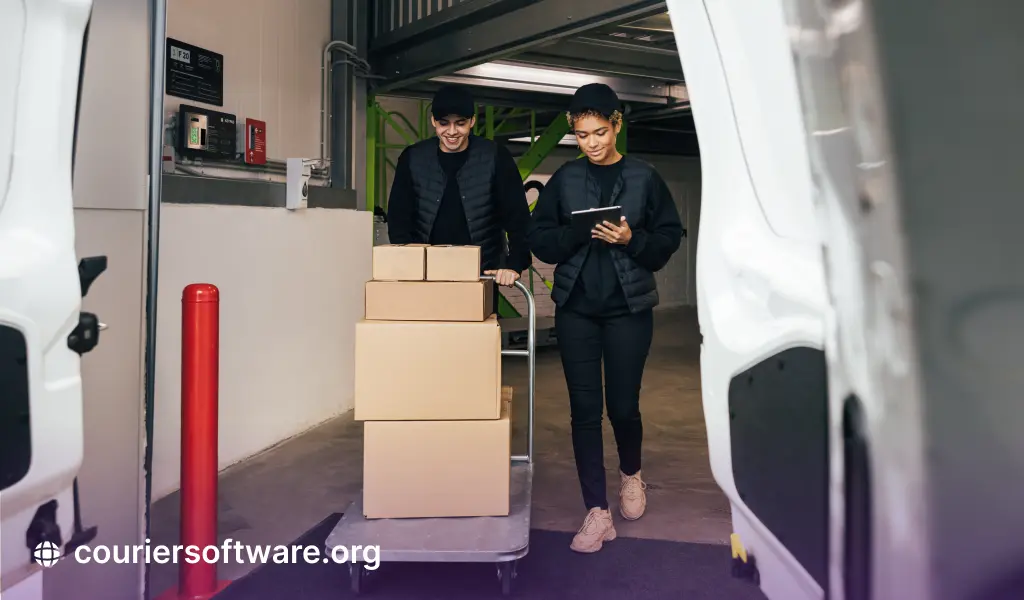In this awesome article, we will gain astonishing knowledge about improving customer communication in the case of delivery problems. We’ll tell you how to avoid conflict, not lose a regular customer, and make a profit even in a case that seems hopeless at first glance.
Almost all courier businesses are, to one degree or another, built on communicating with customers and selling them courier services. The task of a courier service’s businessman is to establish contact with him/her despite the difficulties and still sell what is needed.
Improve customer communication in case of delivery problems
Problem solving is the set of techniques and tools designed to solve delivery problems. Having a method for improving customer communication in case of delivery problems is fundamental because it allows you to react promptly, solve delivery problems in less time and with minimal effort, replicate good practices, understand mistakes so as not to repeat them, and also collaborate more easily, contributing to creating a culture centered on values of mutual help and support.
Find out where you should focus your resources by searching for your own courier brand in the most popular channels. Where you are written about the most, you should be there too! Should it be the case that no one is talking about your brand online, try to find a way to proactively include yourselves in conversations that are relevant to the courier industry.
Since it is the consumer, and not the courier company, that has the most influence over the reputation of a courier company in social media, it is a fact that there can be major consequences if conversations on Facebook and Instagram that deal with a company or organization are ignored. As many as 8 out of 10 consumers begin to doubt buying from a company that fails to answer questions on social media.
Active listening
One of the fundamental elements that will help you to improve customer communication in case of delivery problems is active listening. It involves listening carefully to the client, focusing on him/her, taking into account his/her needs, and reacting to his/her words and emotions. This approach allows you to understand what the customer expects. It allows you to solve problems satisfactorily and build positive relationships that, even if they do not bring benefits in this situation, will bring results in the future.
Also, those who work in courier service’s marketing part are well aware of the phenomenal benefits of using tools that help them listen to what is written about the courier company in social media. But this is probably so fundamental from a customer service perspective. It becomes much easier to adapt your communication if you know what is said and how it is said.
Following what is written about your courier company in social media can provide valuable insight, which you can use to adapt, and improve customer communication in case of delivery problems For example, negative feedback can be used to try to improve the courier service’s brand image, and the relationship with the client. Make it clear to the customer (and everyone else who sees the conversation) that you see the feedback, and that you will do what is required to make the courier service’s customer delightful.
Monitoring and moderation
In this phenomenal world, social media and forums are an awesome solution to existing problems in the case of delivery problems, and listening to these opinions, observing, and joining in the discussion is called social listening. Thanks to the awesome information captured by a social media specialist from the multitude of user comments, posts, and messages, the courier brand has the opportunity to improve its delivery service and increase the value of the services provided in the eyes of consumers, as well as – thanks to a better adjustment to user preferences – to reach new customers.
Properly “cultivated” social listening is maintaining a positive relationship with current customers and an effective way to reduce and optimize the costs incurred in reaching new ones.
Consumers highly value contact with the courier brand. It is a dialogue that benefits both parties – the service or offer is tailored to the customers’ expectations, and they feel “taken care of” and important – their needs have been noticed, and solutions responding to these needs are implemented.
Demonstrate understanding of each problem related to delivery service
Employees in courier service centers are particularly familiar with this scenario: customers quickly become emotional when problems arise. Perhaps many of them have a similar problem that they have to deal with for the third time that day. Or they suddenly face a really difficult challenge. It’s not easy, but this is exactly when you can score points.
Specifically when you approach the delivery problem with understanding, despite everything, you must listen patiently and ask questions until everything is understood. If the solution then deviates from the routine, be creative and take that extra step. A customer who feels understood and heard will be very delightful.
Speed and accessibility
When a customer contacts a courier company directly, they usually have an acute delivery problem. They have often already done their own research and tried out various things. Suddenly, time is running out. Now the customer contacts you and hopes for a response time as quickly as possible. Or even needs it in order to be able to meet deadlines themselves.
The faster you get an answer, the more satisfied you are with customer service. Someone doesn’t have to be available 24/7 to improve customer communication in case of delivery problems, but there should be an opportunity to ask at least the first question around the clock. So don’t just allow questions by phone or letter, but provide contact forms, messengers/chats or email addresses to improve customer communication in case of delivery problems.
Identify the solution and draw up the operational plan to improve customer communication in case of delivery problems
Once you have collected all the data, including customer suggestions, you can try your hand at designing solutions in case of delivery problems. There are some ingredients that characterize the good resolution of a delivery problem, and we could summarize them as follows: simplicity, speed, precision, and respect for time, but above all, empathy, which is the ability to make the customer feel listened to, understood in his/her requests, giving him/her the idea that your trust is well placed.
So speak in a positive way , focusing on the stunning benefits. Inform in a neutral way, through direct expressions that clearly indicate the result that the customer will obtain. If possible, keep alternatives open, so as to have room for maneuver in the event that the interlocutor is not fully satisfied with the initial proposal. At this stage, above all, it is fundamental to focus on the solution, no longer on the delivery problem. Therefore, postpone the corrective measures and discussions with the internal courier team until a later time. They will certainly serve to ensure that the delivery problem does not repeat itself, but they can be addressed more calmly and effectively after everything has been resolved.
Another fundamental factor of this phase is making clear agreements, internally and externally, on deadlines, process phases, and timing. A well-drafted and precisely shared intervention plan avoids errors, reassures, and provides professionalism, transforming problem solving into an opportunity for growth to support the courier brand.
Closing the case
The main effect of mismanaging a delivery problem is to leave the customer’s circle of trust and, unfortunately, not just yours. Without a method to deal with problem solving, we risk burning both commercial relationships and those with the colleagues involved. All this will have the effect of increasing the number of delivery problems we will have to face, triggering a vicious circle that must be broken as soon as possible.
Therefore, be careful of omissions, lies, lack of clarity, disinterest, conflicts, etc, but more than anything, never, ever, forget to carry out the last step that must distinguish any delivery problem solving strategy : the request for feedback the final!
Remember to answer, and do so in time!
It mostly goes quickly in social media, and it is an expectation that many also have towards customer service as well.
Several awesome studies show that most courier clients expect an answer on social media the same day the question is asked. That’s not unreasonable, considering that Northridge Group has reported that 42% expect a response from customer service within an hour, and 17% in just a few minutes. Also, it emerged that the majority expect to receive a response within an hour, and more than half expect a response within 30 minutes.
It is fundamental to remember that the response time matters less if you cannot solve the customer’s delivery problem. A general rule to remember is that if you can easily answer a question on social media with a short comment, then do so. Even more fundamental and giving an answer in the same place as the question was asked, is to give a correct answer quickly. This may mean giving an initial response on social media, then moving the conversation to another channel.
Conclusion
So, improving customer communication in case of delivery problems is fundamental. Having a positive orientation to delivery problems means taking the awesome opportunity to demonstrate your professional values, turning promises into facts and strengthening the relationship with the delivery customer.






